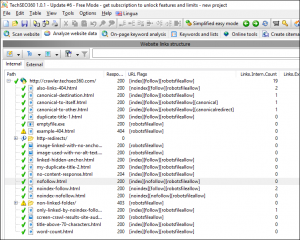A lot of thought goes into devising an effective landing page. You’ve researched the market segment you’re targeting to craft an offer and describe relevant benefits in language that speaks to them. You’ve identified key objections and made sure you’ve included persuasive responses.
But are you really making every effort to convert them? Are you tracking exit intent and making one last push for the conversion before a visitor leaves your landing page?
I’m talking about those annoying little popups that interrupt us as we’re trying to leave a web page. I’ll be honest. I hate them. To me, they’re speed bumps slowing me down as I roam through the Interwebs.
 Annoying speed bumps slowing you down
Annoying speed bumps slowing you down
But there’s no room for sentiment when talking about conversion rates and the truth is that those annoying little popups translate into higher conversion rates. For all the people (like me) who complain about them, higher numbers of people (perhaps occasionally including me) will take you up on the call to action (CTA) presented in an exit popup. You can find numerous case studies on this, like these from The Daily Egg.
Landing Pages & eCommerce Sites
Many of the exit intent studies focus on eCommerce sites or other types of content-rich websites. Indeed, many attribute part of the success of exit intent popups to the idea that they resolve the paradox of choice. The paradox of choice holds that too many choices causes people anxiety, so they choose to make no choice at all. A key tactic for an effective exit intent screen is to narrow the visitor’s choices and give them an easy way to make a simple choice.
But isn’t that what an entire landing page is supposed to do? Focus the visitor on one offer and make it easy for them to say “yes”?
There’s been some pushback on the conclusion that a paradox of choice is really all that crippling. This is good news for using exit intent popups to increase conversion rates on landing pages. But it means finding other ways to use exit intent overlays on a landing page if you’re not using them to reduce the complexity of the choice you’re asking visitors to make.
Defining Our Terms
“Exit intent” refers to the technology behind the popups. It’s technology that tracks visitor behavior on your page, including mouse movements, time spent on the page, and what they’re trying to click. Based on when such behaviors signal an intent to exit the page, the last-ditch effort page pops up.
I should also stop calling them “popups.” That’s no longer technically accurate. There are other terms used now, such as “lightbox” because it dims the web page behind it so the focus is only on the screen on top or “overlay,” which is exactly what it says. These aren’t just semantics. One of the newer advances in exit intent technology is that since they no longer work like popups behind the scenes, popup blockers don’t block them. Helpful.
Exit Offer Options
Alright, if you’re not using an exit intent overlay to narrow down choice, how can you use it on your landing page?
Discounts: If your landing page is selling something, offering a discount can capture the price sensitive. Be wary of using this option too often on your landing pages in case people come to expect it and just wait for the better offer to popup before converting.
Add value: Not just for sales pages, find a way to sweeten whatever your offer is. If your landing page is offering content, you might also offer a second piece that’s not yet otherwise available. This is another tactic to use sparingly within a family of landing pages.
 The Conversion Scientist with an exit intent offer that adds value to his readership.
The Conversion Scientist with an exit intent offer that adds value to his readership.
Reiterate urgency: Urgency is always a great motivator, so if it applies to your offer, you remind them that your offer won’t be around forever.
Present the most relevant benefit: Your landing page probably explains a few benefits that should entice people in a specific target market to convert. Select one of the most attractive on your page benefits and re-present it on the overlay. Keep it simple, but perhaps share another statistic validating the benefit or reframe it.
Overcome a common objection: The opposite tactic to presenting the most relevant benefit. Here, you make another effort to overcome a common objection. Again, keep it simple. You don’t want too much copy in the exit overlay. Just one strong response to one objection, not every response to that one objection.
 Make them an offer they can’t refuse
Make them an offer they can’t refuse
Lower the barrier to saying “yes”: Did you ask for too much information in your CTA form? Use an exit overlay to ask for the bare minimum needed to fulfill your offer. Make a new offer with a lower price point. This isn’t a discount on your original offer. It’s an alternate offer where the landing
page may have required too great a commitment. Someone not ready to buy a 12-pack of coaching sessions may be ready to buy your ebook. This is an approach you can take even if not selling. A visitor may not be ready to schedule a sales call, but may be happy to watch a webinar.
Most exit intent tools offer a variety of configuration options. You can segment exit overlay screens based on different criteria, such as whether someone is a first-time or repeat visitor, what the referral source was, whether they’ve seen a specific overlay already, and other options.
Which means, A/B test as always. The most relevant benefit, better second offer, or most persuasive objection response may not be the one you first assume.
Have you used an exit overlay on your landing page? How’d it go? Share the impact it had in the Comments section below.
Digital & Social Articles on Business 2 Community(99)
Report Post






